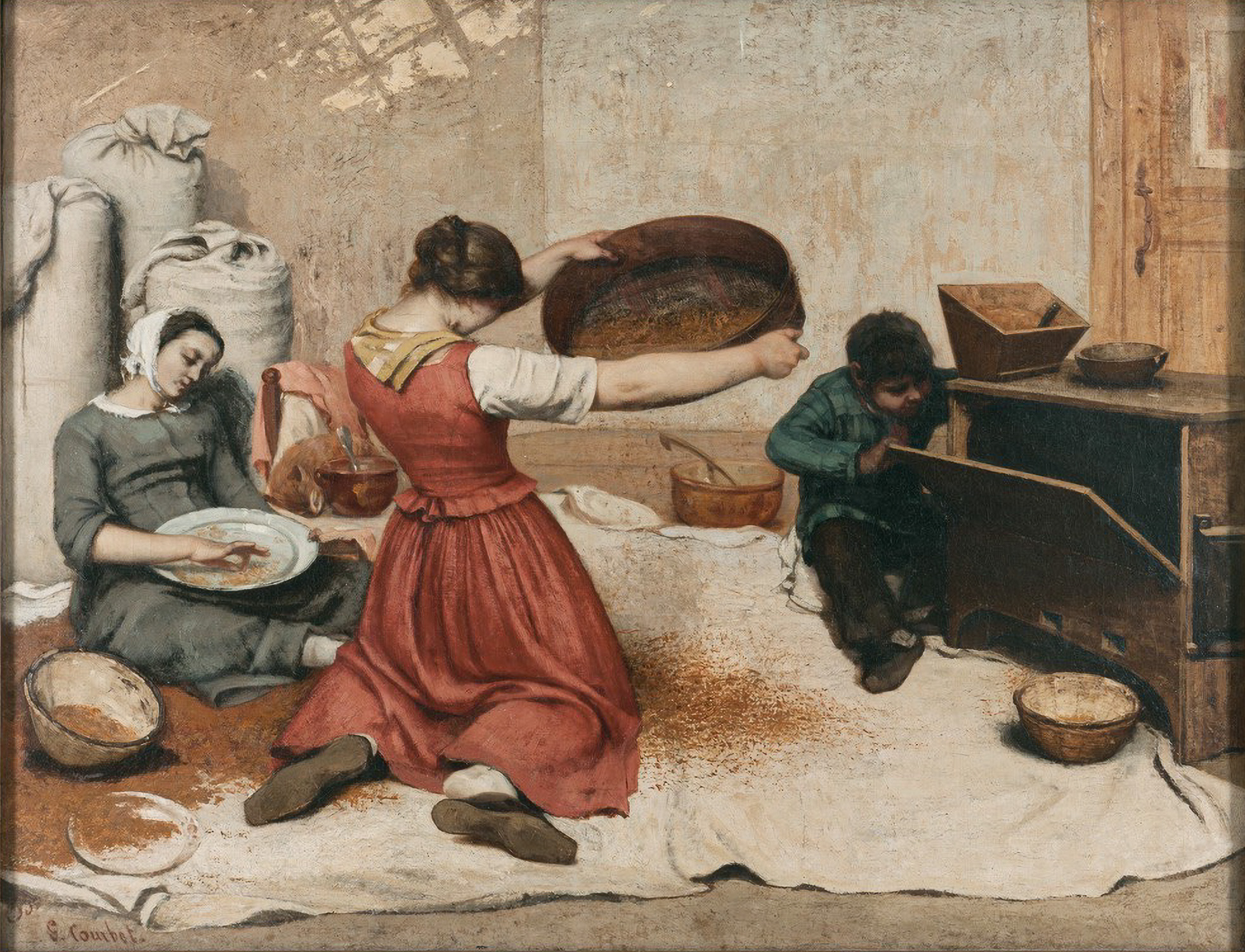Picasso and modernism
2.5 Modernism and continuity

Gustave Courbet, The Winnowers, 1853-4, Musée des Beaux-Arts, Nantes
Cécile Clos / Musée d'arts de Nantes
An overall look
Modern Art is sometimes thought of as something completely separate from the art of the past, but there are many threads of continuity. We have already seen that, when working on Les Demoiselles d’Avignon, Picasso probably studied Rubens’s painting of The Judgement of Paris. The idea that there were no distortions in the human figure in the past is also not true. (Think for example of the proportions of the elongated figures in Botticelli’s Primavera.) Paintings of the past were supposed to tell a story, and Picasso’s Les Demoiselles may have been intended to follow the idea of a group of nude figures set in a brothel, as suggested by Charles Baudelaire in his essay ‘The Painter of Modern Life’ published in 1863.
Nevertheless, although it is a traditional subject, the fact remains that Les Demoiselles forms part of ‘modernism’: the idea that painting should reveal more of its processes and abstract pictorial qualities and should be less concerned with illusion or telling a story,and that it should reflect modern life, and modern urban life in particular, as Baudelaire believed. In addition, modernism was associated with a radical and forward-looking approach that rejected the past, and which could be applied not just to painting but also to every area of the arts. Its beginnings, as far as painting is concerned, are usually associated with the work of Courbet and Manet in France from the middle of the nineteenth century, although some writers think that it goes back further than that.
Read the relevant section in Chapter 1 of Learning to Look at Modern Art, pp. 23–30.
The Winnowers by Gustave Courbet, 1853–4
Courbet called his style of painting Realism, which is regarded as modernist because, although he chose to paint ordinary people in ordinary situations, the emphasis was more on revealing the pictorial qualities than on telling a story. In 1855, Courbet published his ‘Manifesto of Realism’, in which he explained the artist’s right to express his own individuality and his own approach to the period in which he was living. In so doing, Courbet started what was to become a tradition in Modern Art, as artists felt the need to explain what they were doing. In The Winnowers, Courbet places the main figure with her back to us, making an elliptical movement with the winnowing basket, and this shape is reflected all over the picture so that it itself seems to become the subject.
Optional reflection activity: The Winnowers
Take a look at The Winnowers and read the extract from Courbet’s Manifesto on p. 26 of the textbook. Consider the questions below and note your answers in your personal notes:
- How many elliptical shapes can you see?
- How important are the ellipses to the whole effect of the picture?
- Do you feel you get to know the figures as people?
- How tall would the central figure be if she stood up?
Your tutor will post sample answers to this question after you have had time to answer it.